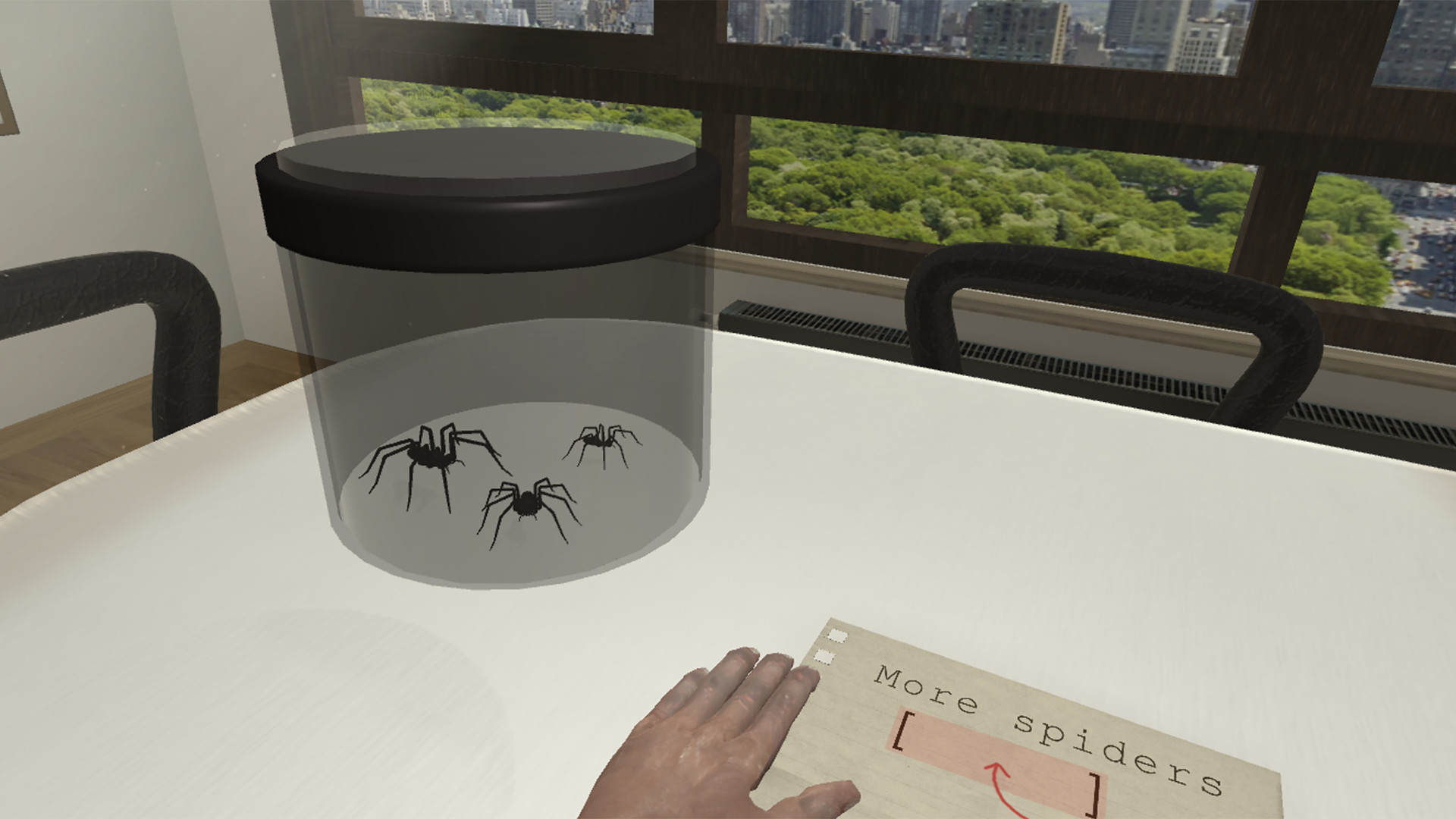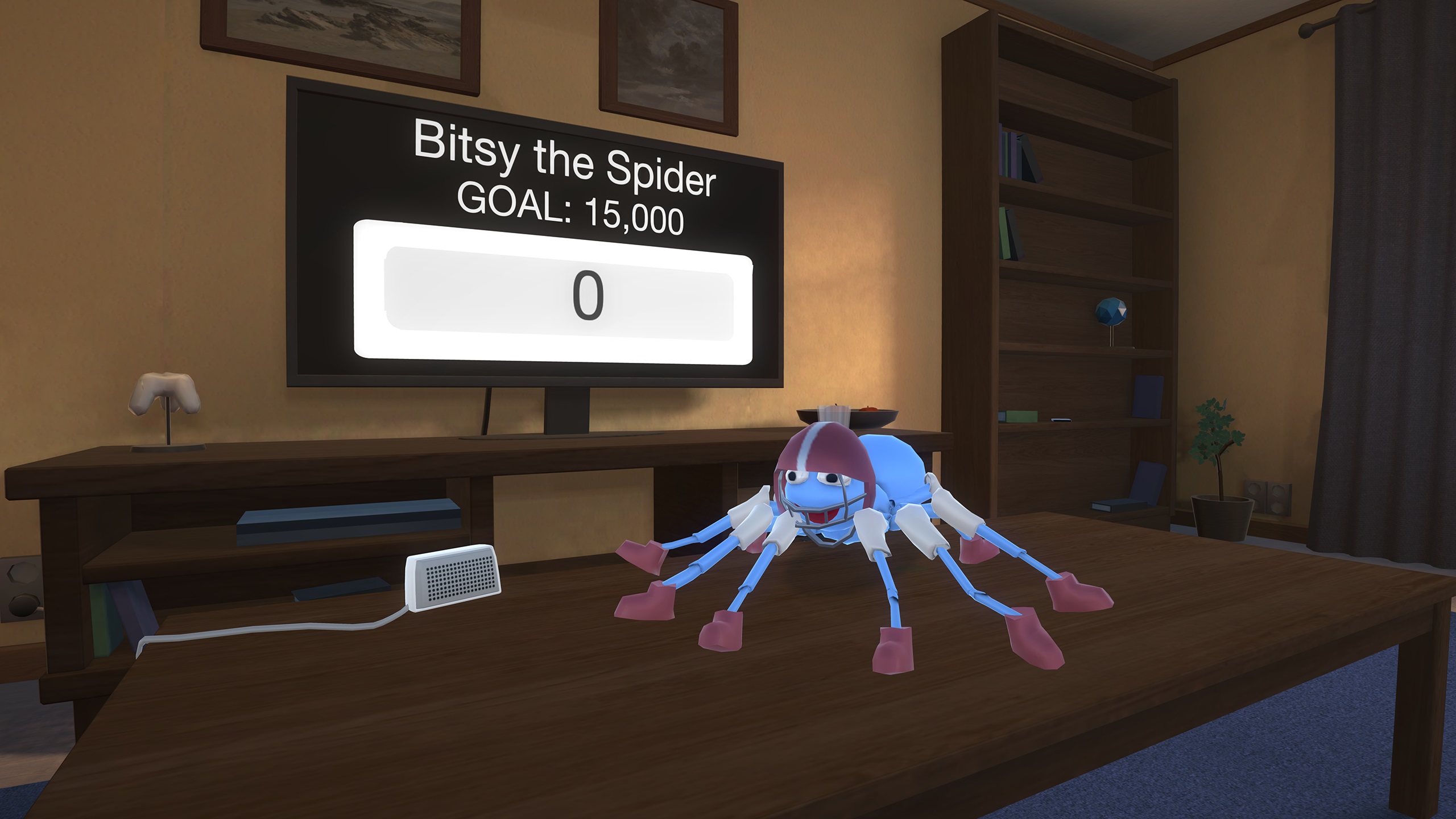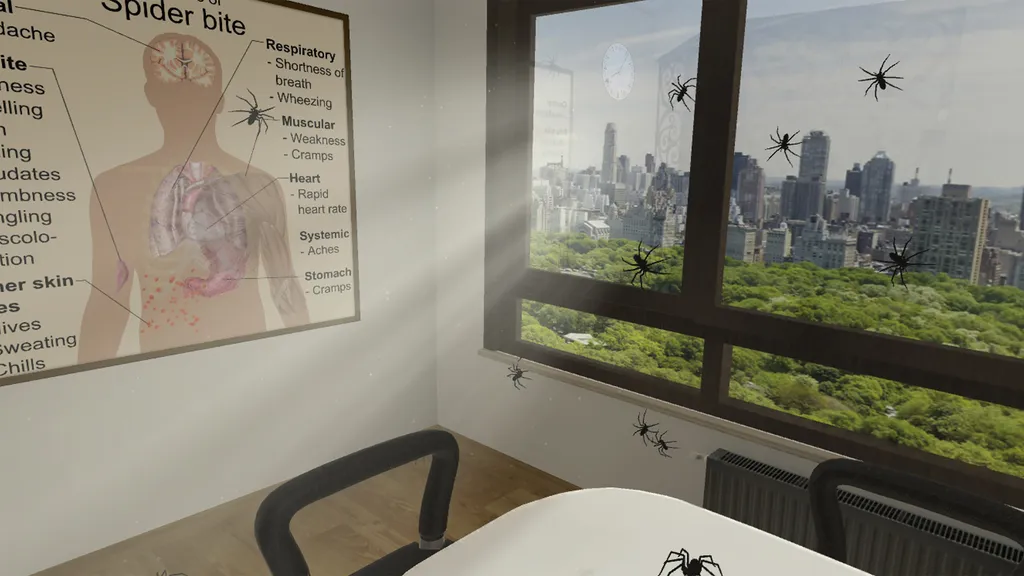As far as I’m concerned, one of the worst things about owning a house is having to clean the gutters. Not because it’s a difficult chore, it actually doesn’t take much effort at all. No, it’s because you have to climb a stupid ladder, a contraption that I absolutely hate using.
While I’m not totally acrophobic (suffering from a fear of heights,) the idea of climbing much of anything higher than 5ft leaves me with a feeling of “nope”. That said, cleaning the gutters is a necessary task. “Suck it up and get it done,” is what I’d tell myself. Just visualize going up the ladder, cleaning the gutters, and then falling to the ground makes me feel uneasy.
What’s interesting about my aversion to high places is my attraction to playing Crytek’s The Climb, an exhilarating rock climbing game for Oculus Rift. Even though my stomach might knot up like a rope being handled by an Eagle Scout, I still desire to put on the headset.

Although scaling a mountain is probably not something I’ll ever experience in real life, doing it from the safety of my home is appealing. And who knows, maybe I’d be willing to climb my ladder more often after spending a few anxious hours in-game. With how immersive VR games can be, it makes sense.
That’s precisely the idea behind software like IgnisVR’s Arachnophobia and Mimerse’s Itsy. Nestled within the field of health and psychology, these apps offer to help those dealing with an unhealthy fear of spiders by simulating a type of exposure therapy; a technique that gradually introduces a patient to something they fear in hopes of desensitizing it. In Arachnophobia’s case, this is done by inviting the player to sit at a table in a virtual environment.
Once seated, they’ll be able to summon spiders at will, increasing or decreasing the number of them based on their current level of comfort. I’m not very fearful of spiders nor am I a psychologist, so I wasn’t able to gauge the effectiveness of the software. I did however get to speak with Martijn Segers, Co-Founder of IgnisVR, to better understand the thought process that went into developing Arachnophobia.

According to Segers, also a student of psychology at Open Universiteit Nederland, he created Arachnophobia, “mainly to show some principles of exposure therapy (gradual exposure) and to show people that VR can have a place within the field of psychology.” He went on to say that the game shouldn’t be taken too seriously. Though there is a desire to help people, this app was a “testing of the waters,” so to speak. “Real therapy, for phobia or other pathology, should be under guidance of a real psychologist,” he said. “A therapist would be able to monitor the client and adjust the experience [in order to give] the best systematic desensitization effects for this particular client.”
Having the experience tailored to an individual’s needs makes sense. Trying to climb a virtual mountain might be a bit much for me early on. The same can be said of someone watching virtual spiders crawl along a table.
Not having a psychologist on call to guide us through the process could make software like Arachnophobia, serious tool or not, a bit impractical. That doesn’t mean that VR isn’t capable of providing aid. It does mean that developers would need to be careful when presenting this sort of thing to the public.
This is especially true when you consider that with any sort of treatment, there are bound to be health risks involved. And because one could assume that most of the devs working on content for VR devices aren’t licensed psychologists, it’s possible that they wouldn’t completely understand the risks involved with trying to make therapeutic software. In spite of this, Segers explains that “VR has a real place within the field of psychology. We just have to create good and scientifically valid experiences.”
In order to assess the merits of apps like Arachnophobia, I reached out to Warrenetta Crawford Mann, Psy.D – a licensed clinical psychologist. Having earned her Masters of Clinical Psychology from the University of Louisville, and her Doctorate from Spalding University, she now serves as the Director of the William and Mary Counseling Center.

When asked if she would consider using VR as a treatment option for those struggling with a phobia, Dr. Mann echoed Segers’ sentiment. “Systematic desensitization is indeed a preferred method of managing specific phobias,” she explained. “This requires gradual and sequential exposure to the object(s) of the phobia as a part of the process. So yes, if a psychologist could create a number of different scenarios, or have access to a number of objects, within a [VR] format it could be useful.”
Sure. This sort of thing could be useful. But what about the possible health risks and, by extension, any legal or moral issues that could be associated with developing therapeutic software? On the health side of things, Dr. Mann explained what should be considered. “When working with someone who is afraid of flying you do not start with a simulated airplane. The virtual simulation phase would need to begin with perhaps the road approaching the airport. People with true phobias can escalate into significant anxiety pretty quickly and there has to be a way to control the process of exposure.”
From a legal stand point, she couldn’t fully answer but stated that she couldn’t think of any legal issues that couldn’t be overcome with the right professional consultation. Her main concern, of course, was the patient. “I would worry most about people who might try this on their own and develop even more significant problems from a product that was not designed for being used in this way,” Dr. Mann said.

What does all of this mean? It means that VR could be effectively used in psychological treatment. Developers should refrain from creating anything too serious without the guidance of a licensed psychologist though. For me it means I may have a lot of “nope” in my immediate future. Not because I might scare myself to death or anything. But because getting real help will take more than just jumping into the deep end while wearing a VR headset.
—
Kenneth is the Founder and Editor-in-Chief of United Front Gaming and a freelance writer. You can follow him on Twitter: @Kennyufg.





























